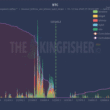Artificial intelligence has redefined how U.S. immigration authorities surveil public spaces—deploying once battlefield-exclusive drones, facial recognition, and predictive software across American neighborhoods. These aggressive technologies, now powering the efforts of agencies like ICE and Homeland Security, have triggered mounting concerns over privacy, transparency, and their potential for abuse.
Rise of AI Surveillance in America’s Public Spaces
What was once cutting-edge military tech is increasingly central to how U.S. Immigration and Customs Enforcement (ICE) and the Department of Homeland Security (DHS) monitor American cities. During recent demonstrations in Los Angeles, for example, overhead military-grade drones tracked protestors and incidents of violence—a clear signal that public surveillance is no longer confined to high-security zones. Footage posted by Homeland Security on social media further amplified fears that advanced AI tools—from drones to real-time analytics—are now a fixture in domestic law enforcement operations.
AI, Drones & Algorithms: The New Tools of Immigration Enforcement
ICE and the DHS have overhauled immigration enforcement by integrating artificial intelligence into nearly every operational stage. Drones equipped with high-resolution cameras, machine learning software for mobile device analysis, and voice analytics are now standard. These technologies help identify, profile, and even predict the behavior of individuals facing investigation. Palantir’s Immigration Lifecycle Operating System compiles detailed digital profiles, combining federal databases with real-time surveillance data. Machine learning models—like Hurricane Score—are used to assess whether an immigrant is likely to miss court hearings, influencing case supervision without human intuition.
Privacy, Civil Liberties, and Community Fears
While federal agencies tout these innovations as tools for safety and efficiency, advocacy groups warn the expansion is happening in the shadows. Critics claim immigrant and marginalized communities are disproportionately targeted, with technologies often rolled out absent of transparency or independent oversight. Citing concerns over chilling First Amendment rights and fueling a “system of control,” civil liberties organizations argue surveillance by law enforcement could have a direct impact on free speech—even deterring lawful protest and day-to-day activity in affected neighborhoods.
Key Stats & Figures
- Drones in Action: Military-grade drones, such as the Predator, were used to surveil public protests in Los Angeles and share footage online.
- Predictive Risk Scores: AI-powered models like Hurricane Score estimate the probability that non-detained immigrants will not appear at hearings.
- Palantir’s Role: Immigration Lifecycle Operating System compiles integrated profiles from federal datasets and real-time surveillance sources.
- Voice & Device Analysis: Machine learning automates the review and translation of audio evidence and the mapping of digital social networks from mobile devices.
Community Advocacy and Demands for Accountability
Local organizations and civil rights advocates are calling for renewed community engagement and oversight as surveillance tools become more entrenched. The American Civil Liberties Union (ACLU) and other non-profits stress that public agencies must respect the wishes of residents—especially when communities object to drones or AI monitoring on ethical and privacy grounds. They argue that while the development of these technologies may be inevitable, collective action and policy decisions at the local level remain powerful levers to prevent unchecked governmental surveillance.
Conclusion: What This Means for the Market
The rapid domestic deployment of AI-driven surveillance by U.S. immigration authorities has far-reaching implications for civil liberties, public trust, and tech policy nationwide. As advanced monitoring becomes an everyday reality, the ensuing debate over its oversight, transparency, and ethical boundaries is set to intensify. Communities, regulators, and privacy advocates alike will play a crucial role in shaping how—and if—these powerful tools are used moving forward.
